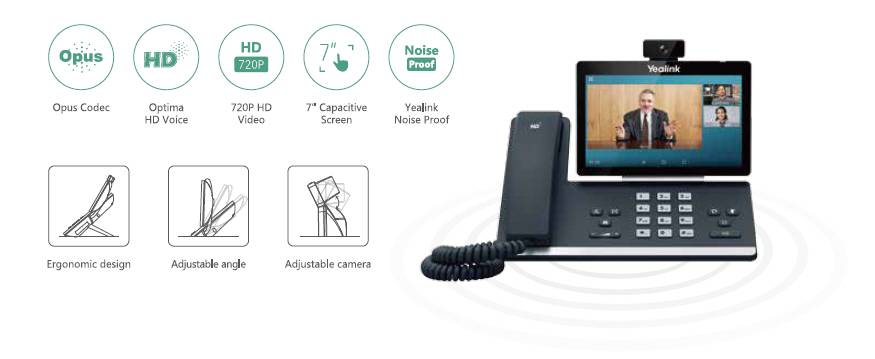Introduction
In our increasingly interconnected world, the ability to communicate across languages is more crucial than ever. While traditional communication methods often falter when faced with language barriers, innovative technologies like Voice over Internet Protocol (VoIP) systems are stepping up to bridge these gaps. This article delves into how VoIP Phone Service can help overcome language barriers through cutting-edge features that enhance communication.
Understanding VoIP Phone Service
What is VoIP?
Voice over Internet Protocol (VoIP) refers to a technology that allows users to make voice calls using the internet instead of traditional phone lines. By converting voice into digital signals, VoIP enables seamless communication across various networks and devices.
The Rise of VoIP Services
With the advent of high-speed internet and smartphones, VoIP has rapidly gained popularity. Businesses and individuals alike are leveraging its benefits—lower costs, improved flexibility, and enhanced features.

Key Features of VoIP Systems
- Cost Efficiency: Reduced long-distance call charges. Scalability: Easily add or remove lines as needed. Integration: Connect with other applications like CRM systems. Advanced Call Features: Voice mail-to-email, call forwarding, etc.
Overcoming Language Barriers with Innovative Features in VoIP Systems
The Importance of Multilingual Communication
In global business environments or diverse communities, language aptitude can make or break relationships. Misunderstandings can lead to missed opportunities and miscommunications.
How VoIP Enhances Multilingual Interactions
VoIP systems are equipped with several features designed specifically for overcoming language barriers:
Real-Time Translation Services
Some modern VoIP platforms offer real-time translation services that convert spoken words from one language to another during conversations. This feature ensures that participants understand each other effectively.
Multi-Language Support
Many VoIP providers now support multiple languages in their software interfaces and customer service options, allowing users from different linguistic backgrounds to navigate the system comfortably.

Speech Recognition Technology
Using advanced speech recognition algorithms, some VoIP solutions can detect the language being spoken and automatically adjust settings accordingly. This innovation minimizes confusion during calls.
The Technological Backbone of VoIP Innovations
Cloud-Based Architecture
Cloud technology underpins many innovative features in modern VoIP Phone Services. It provides a scalable infrastructure that supports various functionalities without requiring significant hardware investments.
Integration with AI Technologies
Artificial Intelligence (AI) plays a vital role in enhancing communication capabilities within VoIP systems. From predictive text suggestions to automated translations, AI improves user experience tremendously.
Security Measures in VoIP Systems
Ensuring secure communication is paramount when dealing with multilingual interactions. Strong encryption protocols protect sensitive information while maintaining seamless connectivity.

Benefits of Utilizing Innovative VoIP Features
Increased Accessibility for Global Teams
For companies operating on an international scale, effective communication tools are essential for collaboration among team members who speak different languages.
Improved Customer Engagement
Businesses VoIP Phone System Los Angeles can enhance customer service by utilizing multilingual capabilities within their VoIP Phone Service, leading to higher satisfaction rates among diverse clientele.
Cost Savings Without Compromising Quality
While traditional translation services may be costly, integrating such features into a VoIP system results in significant cost savings alongside improved quality of communication.
Challenges Facing Multilingual Communication in VoIP
Technical Limitations
Despite advancements in technology, some users may still face issues connecting due to regional restrictions or outdated equipment.
Cultural Nuances and Contextual Understanding
Language is not just about words; it encompasses cultural nuances too. Some phrases may not translate directly, leading to potential misunderstandings during conversations.
Practical Applications of Innovative VoIP Solutions
In Business Communications
Corporations leveraging multilingual capabilities can streamline operations by ensuring all employees have equal access to information and resources regardless of language proficiency.
In Healthcare Settings
Medical professionals often encounter patients who speak different languages; thus, having access to real-time translation via their phone service can be life-saving.
FAQs About Overcoming Language Barriers with Innovative Features in VoIP Systems
What types of languages are supported by modern VoIP systems?- Most modern systems support a wide range of languages including but not limited to English, Spanish, Mandarin, French, and Arabic depending on the provider's offerings.
- Real-time translation utilizes sophisticated algorithms and AI technologies that convert spoken words into another language instantaneously during live calls.
- Yes! Most providers allow you to port your existing number over to their service without interruption.
- While basic plans may cover standard calling features, some advanced functionalities like real-time translation might come at an extra cost depending on the provider.
- Absolutely! Many providers offer multi-language support within their platforms making it easier for non-English speakers.
- Most reputable providers employ robust encryption techniques ensuring that data remains confidential during transmission between users.
Conclusion
Navigating the complexities of multilingual communication has always been challenging; however, innovative features available through modern VoIP Phone Services offer unprecedented solutions for overcoming these barriers. With advancements such as real-time translation services and enhanced security measures backing these systems up—businesses worldwide can foster better relationships regardless of linguistic differences while saving time and money along the way. Embracing these innovations will not only improve operational efficiencies but also promote inclusivity across diverse environments—truly embodying what it means to thrive in today's global marketplace!